
Weeding by zone
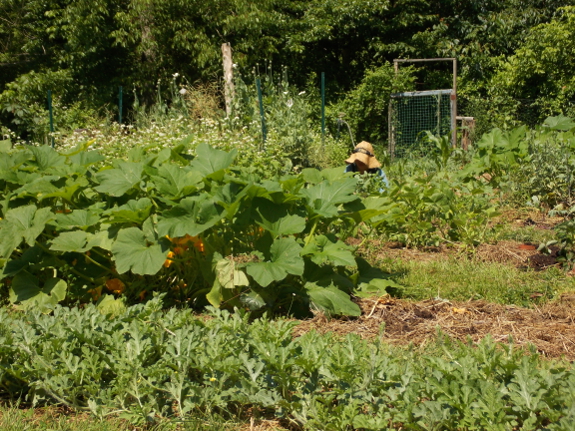
At this time of year, I
start weeding by zone. We've got three vegetable garden plots,
plus various larger perennial areas, and each one needs to get hit in
the next month or so. While a better gardener would probably weed
the spots that need it the most first, the zone technique gives me a
momentary feeling of control and lets me enjoy a manicured look in each
area...for a week or two. And it doesn't hurt crop plants as long
as you wait to change over to zone weeding until most seedlings have
been weeded around once.
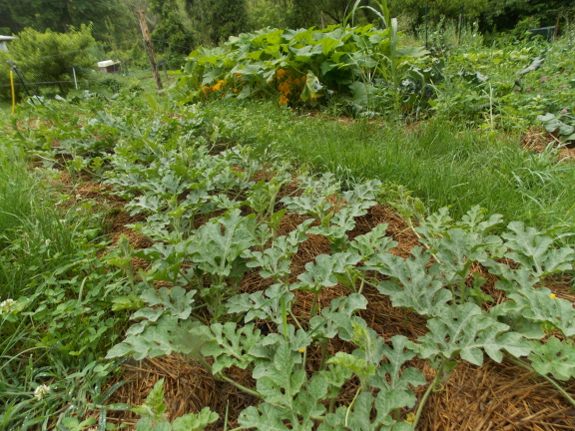
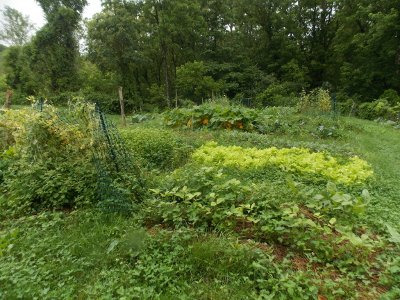 Of
course, the downside of the zone approach is that each area looks
pretty shaggy in the weeks leading up to that zone's turn to be weeded
once again. These two shots show the mule garden at the beginning
of the week --- enough weeds to make me feel overwhelmed! Luckily,
a quick pass with the lawnmower and then three hours of weeding with
Kayla just about perked the whole area up. I figure one more
morning's work will have the whole place sparkling with that just-weeded
glow.
Of
course, the downside of the zone approach is that each area looks
pretty shaggy in the weeks leading up to that zone's turn to be weeded
once again. These two shots show the mule garden at the beginning
of the week --- enough weeds to make me feel overwhelmed! Luckily,
a quick pass with the lawnmower and then three hours of weeding with
Kayla just about perked the whole area up. I figure one more
morning's work will have the whole place sparkling with that just-weeded
glow.
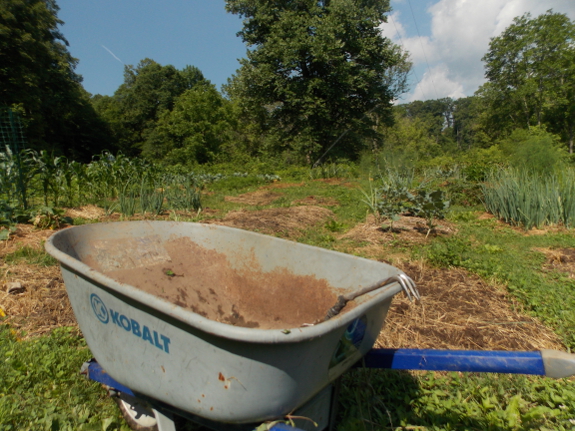
The front garden took a
lot longer to get into shape --- more like two weeks instead of two
days. Many of those beds were full of a rye cover crop
until May, and the cold winter made our rye grow so slowly that many
weeds had poked up amid the grain by cutting time. Since I don't
let garden areas get any further out of control that that, though, one
tough weeding job per year is the maximum I can expect in each
area. Everywhere else, weeding just consists of dampening the soil
the day before (via sprinklers or rain), then quickly pulling out weeds
between seedlings. I follow up by smothering further weed seeds
with straw mulch, ensuring that later weeding jobs are as quick as our
recent pass over the mule garden.
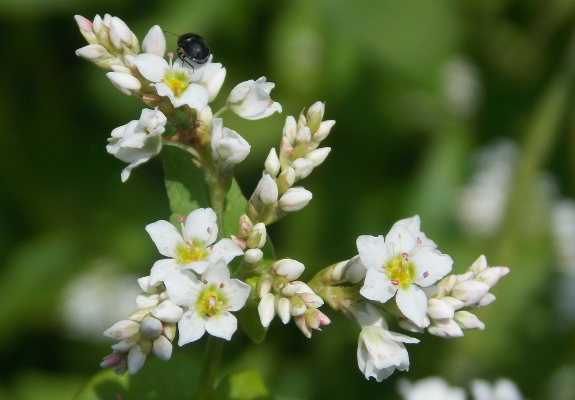
What about areas where I pulled out spring crops but don't plan on planting any new vegetables until fall? A buckwheat cover crop is the perfect way to build organic matter while keeping weed pressure at a minimum. Between the tree alley
in the pasture and the vegetable garden, I've already used about 15
pounds of buckwheat seeds so far this summer, which keeps the bees and
the soil microorganisms happy.
I'm finally starting to
feel like the end is in sight with the spring weeding catchup job, but
this is no time to rest on my laurels. Soon, preserving the bounty
will take the place of extra weeding, ensuring that the garden keeps me
well busy at least until the first frost. Now's when I make up
for those lazy winter days writing in front of the fire....
Want more in-depth information? Browse through our books.
Or explore more posts by date or by subject.
About us: Anna Hess and Mark Hamilton spent over a decade living self-sufficiently in the mountains of Virginia before moving north to start over from scratch in the foothills of Ohio. They've experimented with permaculture, no-till gardening, trailersteading, home-based microbusinesses and much more, writing about their adventures in both blogs and books.
Want to be notified when new comments are posted on this page? Click on the RSS button after you add a comment to subscribe to the comment feed, or simply check the box beside "email replies to me" while writing your comment.
